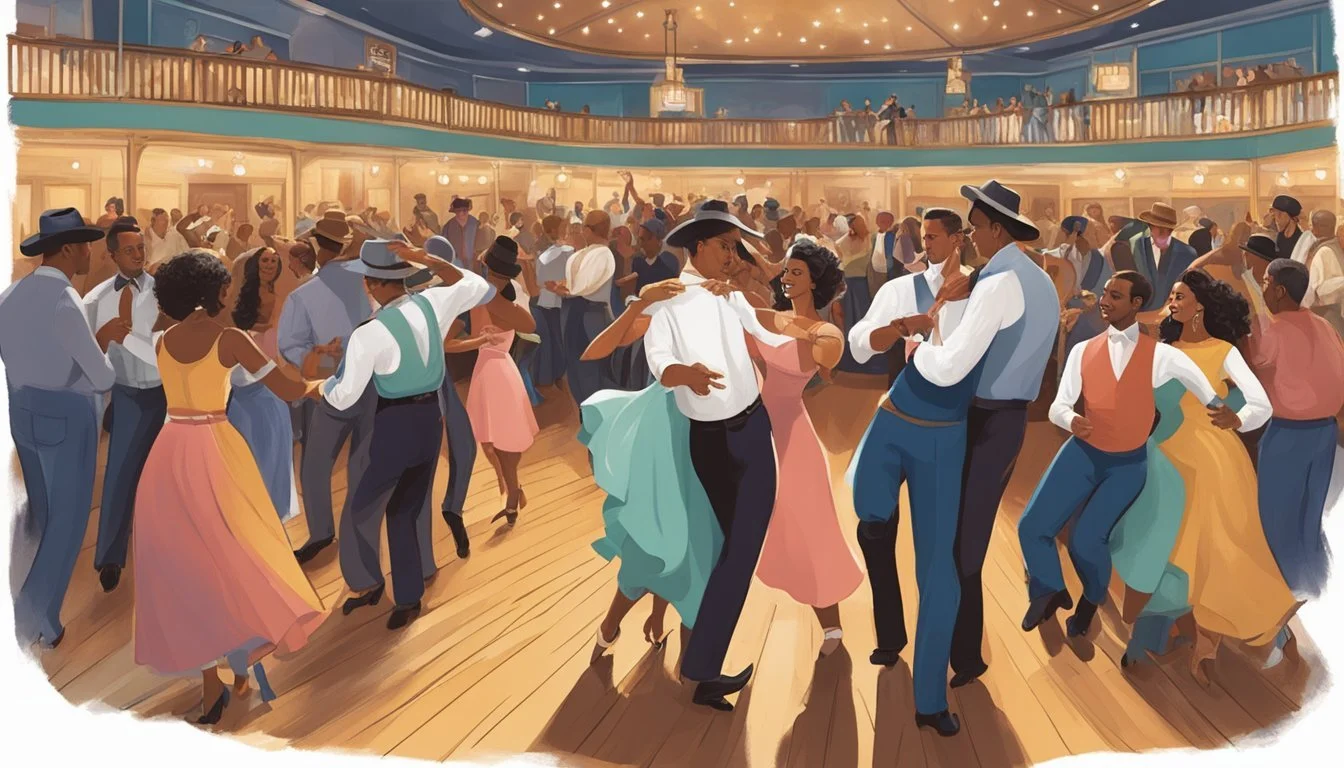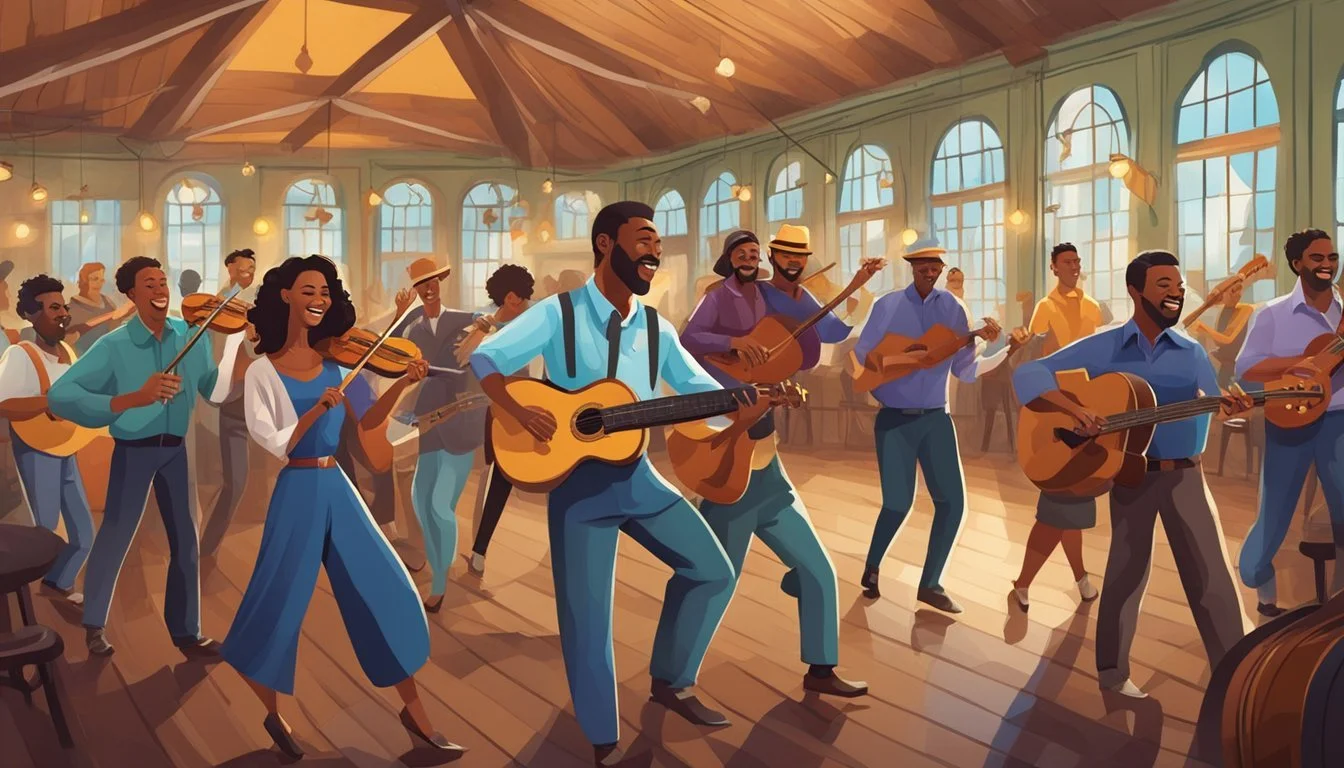The Impact of Texas Western Swing on American Music
Cultural Ripples & Genre Evolution
Western swing emerged as a distinctive genre in the landscape of American music, primarily originating in Texas during the late 1920s. With its roots entangled in the region's Western string bands, this genre became synonymous with dance music characterized by an upbeat tempo that encouraged large crowds to flock to dance halls and clubs throughout Texas, Oklahoma, and California, particularly throughout the 1930s and 1940s. This hybrid musical style combined elements of rural, traditional country music with the more urbanized and sophisticated sounds of jazz and swing, resulting in a unique cultural phenomenon that would leave an indelible mark on the evolution of American music.
Central figures in the development of Western swing, like Milton Brown and Bob Wills, were instrumental in the genre's surge in popularity. Brown's ability to blend various musical influences cultivated a sound that resonated with a diverse audience, transcending social and cultural barriers. Meanwhile, Bob Wills, dubbed the father of Western swing, infused the music he grew up with in the Texas Panhandle with the blues, jazz, and even Mexican and Eastern European influences. Wills' band, the Texas Playboys, exemplified the innovativeness of Western swing by incorporating instruments not typically found in country bands, such as horns and drums, thereby expanding the sonic palette of the genre.
The impact of Western swing on American music extended well beyond the dance halls and nightclubs; it played a pivotal role in shaping modern country music by introducing a broader audience to the genre and by influencing subsequent musicians who sought to incorporate its free-spirited and eclectic essence into their work. Despite a decline in its widespread popularity in the post-World War II era, Western swing's legacy endures, bearing testament to its significant contribution to the tapestry of American music.
Origins of Texas Western Swing
Texas Western Swing is a rich tapestry of American music that emerged from the Southwest, combining elements of jazz, blues, folk, and traditional rural sounds. It reflects the cultural diversity of the early 20th century America and has had a significant impact on the musical landscape of the nation.
Early Influences and Pioneers
Texas Western Swing evolved in the late 1920s. It was influenced by various music styles, including blues from the Deep South, jazz from New Orleans, and folk tunes from the rural Southwest. These genres coalesced, providing a foundation for what would become a distinctive sound.
Key Figures in Western Swing
Bob Wills and Milton Brown are two pivotal figures in the history of Western Swing. Wills formed the Texas Playboys, while Brown established Milton Brown and His Musical Brownies. Both groups were instrumental in shaping the genre and spreading its popularity.
Racial and Cultural Crossovers
Western Swing was a product of significant racial and cultural crossovers. It bridged the gaps between black and white musicians and drew from the diverse cultural landscape of Texas and the surrounding areas, creating a sound that resonated across racial lines.
Western Swing and Radio's Role
Radio played a crucial role in the diffusion of Western Swing. Stations like KVVO in Austin and others across the Southwest broadcasted live performances, increasing the genre's reach. The Light Crust Doughboys, among others, gained regional fame thanks to radio exposure.
Birth of Western Swing Bands
New bands formed to meet the increasing demand for Western Swing music. The popularity of jazz bands also influenced the structure of Western Swing groups, which often included a strong rhythm section and various melodic instruments.
The Great Depression's Influence
The Great Depression shaped Western Swing in a significant way. Despite economic hardships, dance halls remained popular community centers. Western Swing provided an affordable form of entertainment and an escape for people.
Texas: The Cradle of Western Swing
Texas, with cities like Fort Worth, Austin, and San Antonio, was the cradle of Western Swing. The genre's development was deeply rooted in Texan culture and the state's history of musical innovation and cultural fusion.
Western Swing's Expansion
From its Texan origins, Western Swing expanded to Oklahoma and California, notably through Tulsa's vibrant scene. As it spread geographically, the genre's popularity boomed, influencing the American music scene profoundly, paving the way for future country music innovations.



